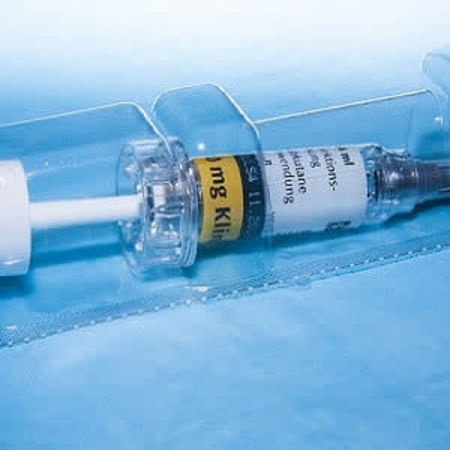There is concern about excessive bleeding when low-molecular-weight heparins (LMWHs) are used for venous thromboembolism (VTE) prophylaxis in renal dysfunction. To evaluate whether LMWH VTE prophylaxis was safe and effective in critically ill patients with renal dysfunction, researchers conducted a subgroup analysis of PROTECT, a randomised trial comparing dalteparin (5,000 IU daily) with unfractionated heparin (5,000 IU twice-daily) for VTE prophylaxis.
Their analysis shows that in critically ill patients with end-stage renal disease (ESRD), or severe renal dysfunction, there was no significant difference in any VTE or major bleeding between unfractionated heparin (UFH) and dalteparin. However, patients with severe renal dysfunction who received dalteparin had more proximal deep vein thrombosis than those on UFH; this finding did not hold in patients with ESRD alone.
Patients admitted to an intensive care unit (ICU) are at high risk for developing VTE, which comprises deep vein thrombosis (DVT) and pulmonary embolism (PE). Despite prophylaxis with UFH, five percent of patients develop proximal DVT, and this rate is higher among patients with septic shock. VTE prophylaxis with LMWHs is an appealing option in ICU patients due to administration ease (daily dosing), availability of pre-filled syringes (reducing the chance of medication error), and a lower incidence of heparin-induced thrombocytopenia than UFH. However, LMWH use in ICU patients may be concerning because, unlike UFH, these agents are cleared mainly by the kidney, and a high proportion of ICU patients will have acute or chronic renal dysfunction.
Few studies have evaluated LMWHs for VTE prophylaxis in ICU patients with severe renal dysfunction. Moreover, none of these studies assessed bioaccumulation or clinical outcomes when LMWH was compared to VTE prophylaxis with UFH, which is dependent on non-renal mechanisms for clearance. In this new analysis, researchers sought to compare the efficacy (VTE) and safety (major bleeding) of dalteparin and UFH in patients with dialysis-dependent ESRD before ICU admission.
Researchers studied ICU patients with pre-ICU dialysis-dependent ESRD (pre-specified subgroup; n = 118), or severe renal dysfunction at ICU admission (defined as ESRD or non-dialysis dependent with creatinine clearance [CrCl] <30 ml/min; post hoc subgroup; n = 590). They compared dalteparin (5,000 IU daily), with UFH (5,000 IU twice daily), and considered outcomes of proximal DVT; pulmonary embolism (PE); any VTE; and major bleeding. Adjusted hazard ratios [HR] were calculated using Cox regression.
Their key findings include:
- In patients with ESRD, there was no significant difference in DVT (8.3% vs. 5.2%, p = 0.76), any VTE (10.0% vs. 6.9%; p = 0.39) or major bleeding (5.0% vs. 8.6%; p = 0.32) between UFH and dalteparin.
- In patients with severe renal dysfunction, there was no significant difference in any VTE (10.0% vs. 6.4%; p = 0.07) or major bleeding (8.9% vs. 11.0%; p = 0.66) but an increase in DVT with dalteparin (7.6% vs. 3.7%; p = 0.04).
- Interaction p-values for comparisons of HRs (ESRD versus not) were non-significant.
"Our findings are relevant to clinical practice as they further challenge the premise that LMWHs should be avoided in patients with renal dysfunction because of presumed bioaccumulation and the potential for an increase in bleeding," the authors write. "We acknowledge the inconsistent finding for the outcome of DVT in the groups with ESRD compared to the larger subgroup of severe renal dysfunction (ESRD or CrCl<30 mL/min without dialysis dependence); we believe that this finding should be interpreted with caution and warrants further study."
Source: PLoS ONE
Image Credit: Pixabay
References:
Pai M, Adhikari NKJ, Ostermann M, Heels-Ansdell D, Douketis JD, Skrobik Y, et al. (2018) Low-molecular-weight heparin venous thromboprophylaxis in critically ill patients with renal dysfunction: A subgroup analysis of the PROTECT trial. PLoS ONE 13(6): e0198285. https://doi.org/10.1371/journal.pone.0198285
Latest Articles
Venous Thromboembolism, dalteparin, renal dysfunction, low-molecular-weight heparins
There is concern about excessive bleeding when low-molecular-weight heparins (LMWHs) are used for venous thromboembolism (VTE) prophylaxis in renal dysfunction. To evaluate whether LMWH VTE prophylaxis was safe and effective in critically ill patients wit























